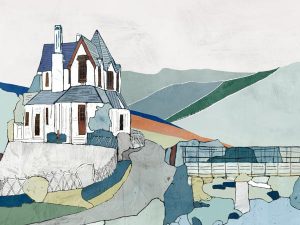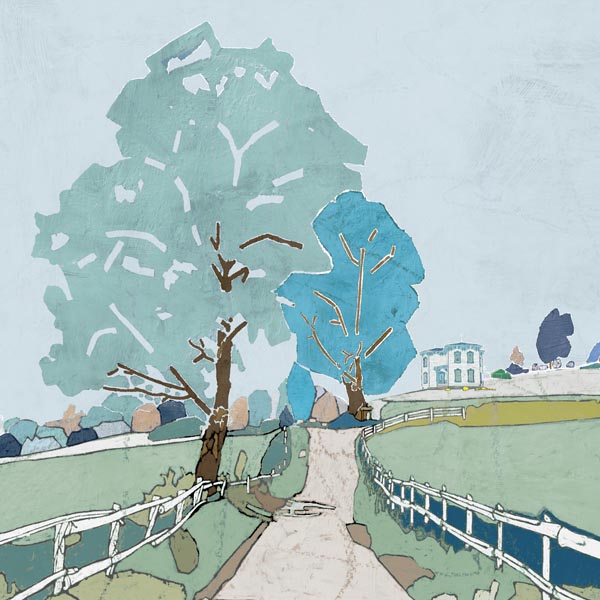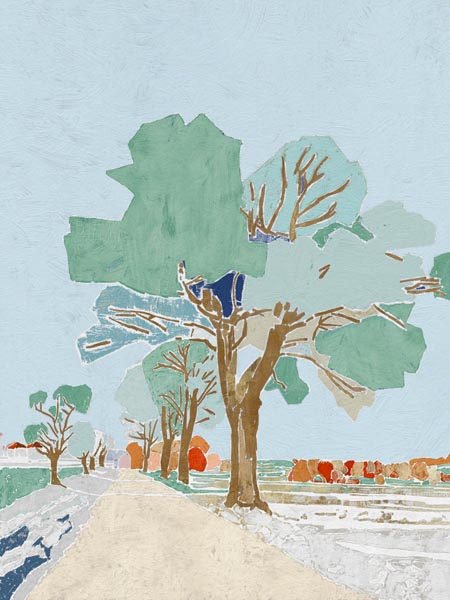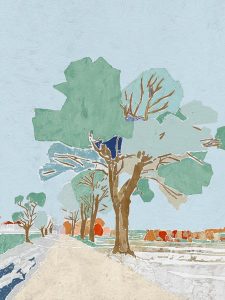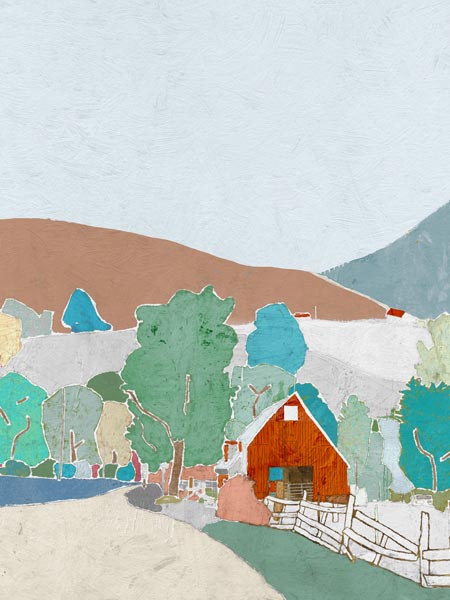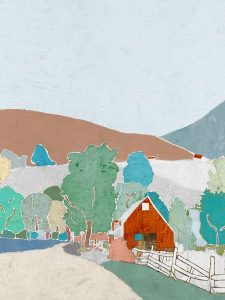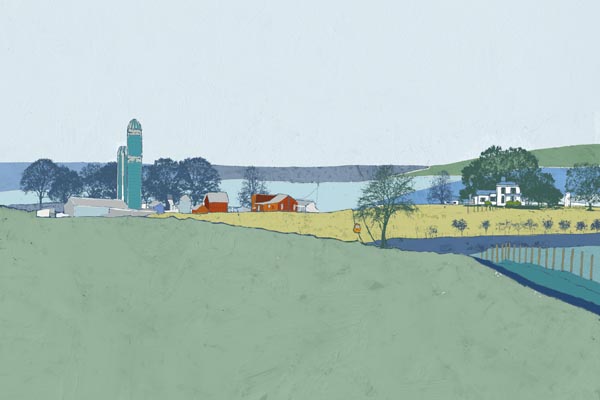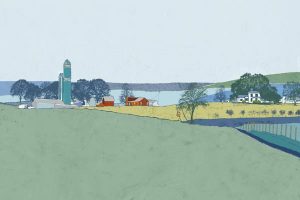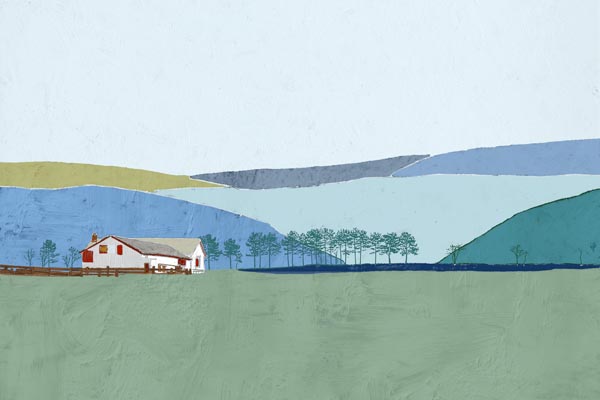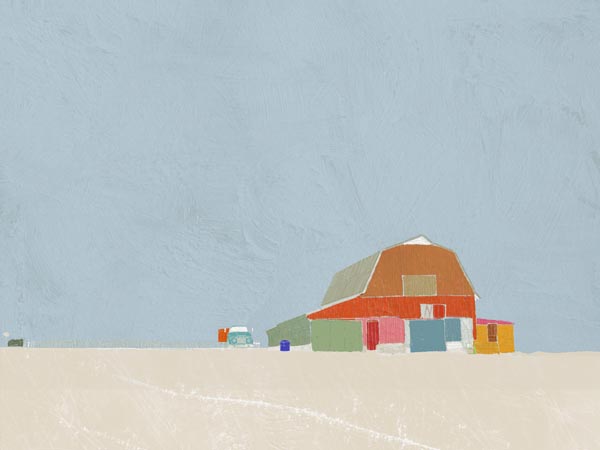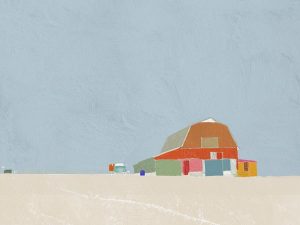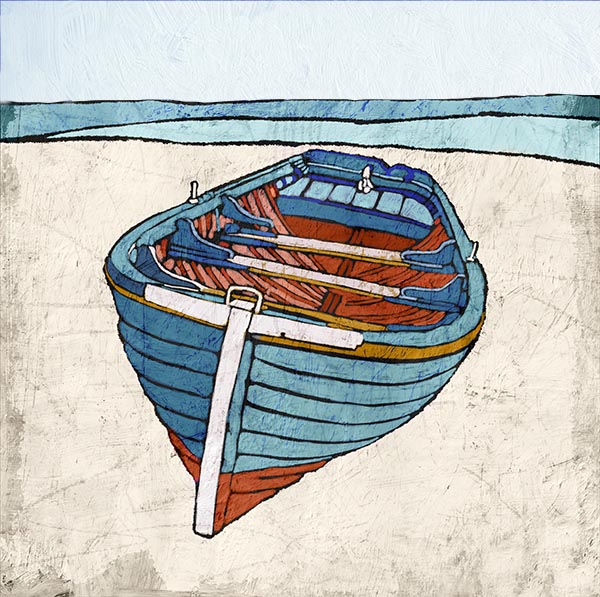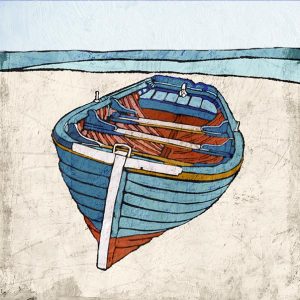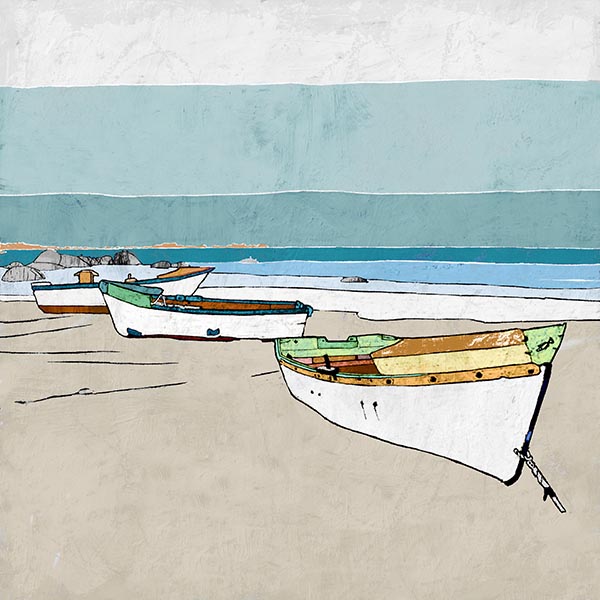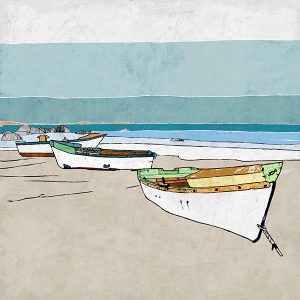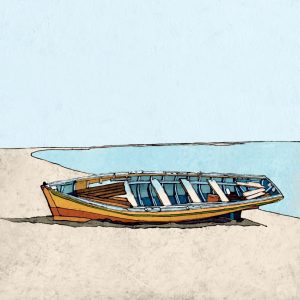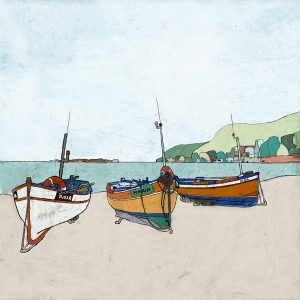
Maud Lewis lived her life in an extremely rural region of Eastern Canada. Digby County was a small Nova Scotian community which revolved around fishing and farming, and still does today. But in the early 1900’s, the farms were small and the soil thin; the fishing was seasonal, and sparse at best. Life in this rural area was never easy, even for the communities most privileged; — and life certainly wasn’t easy for Maud.
Maud was born on March 7, 1903. She suffered multiple birth defects that left her shoulders permanently sloped, and her chin resting unnaturally on her chest. Her hands were deformed with swollen knuckles, and twisted fingers. As a result of Maud’s physical deformities, she was teased and taunted by her peers, treated as an outcast by the small community.
Isolated and lonely, she relied more and more on her own imagination for companionship. At the age of 11, Maud began to express herself through painting. She painted Christmas cards and sold them door to door. Soon Maud’s only past-time became her passion; and in the face of adversity, an artist emerged.
Maud’s life changed drastically upon the death of her parents. She lived briefly with her brother Charles and his wife, but was soon sent away, penniless, to live with her Aunt Ida in Digby, N.S. Maud and her brother never spoke again.
While staying with her aunt, Maud met her husband, Everett Lewis. Everett was an impoverished fish peddler who was looking for a housekeeper, not a wife; yet the arrangement worked for both of them. Despite living with a miserly husband in a primitive house without electricity or running water, Maud was content. She was simply happy to be married, which she had never thought possible considering her deformities. They provided companionship for each other. And when rheumatoid arthritis swelled Maud’s hands to the point that she could no longer do the housework, Ev took over and freed up Maud’s time for painting. Her painting was an important if small source of income. Ev would sell her Christmas cards from his Model T Ford as Maud waited in the car.
Often a subject of Maud’s paintings, Everett, though unwilling and probably unable to buy art supplies, did his best to contribute what he could to Maud’s work. Down to the docks he would trudge, waiting for the fishing boats and trawlers to receive a last coat of paint. Ev would take the paint cans back to Maud to scrape the last bit of colour from the bottom. He would save every last drop in a sardine can which served as Maud’s palette.






